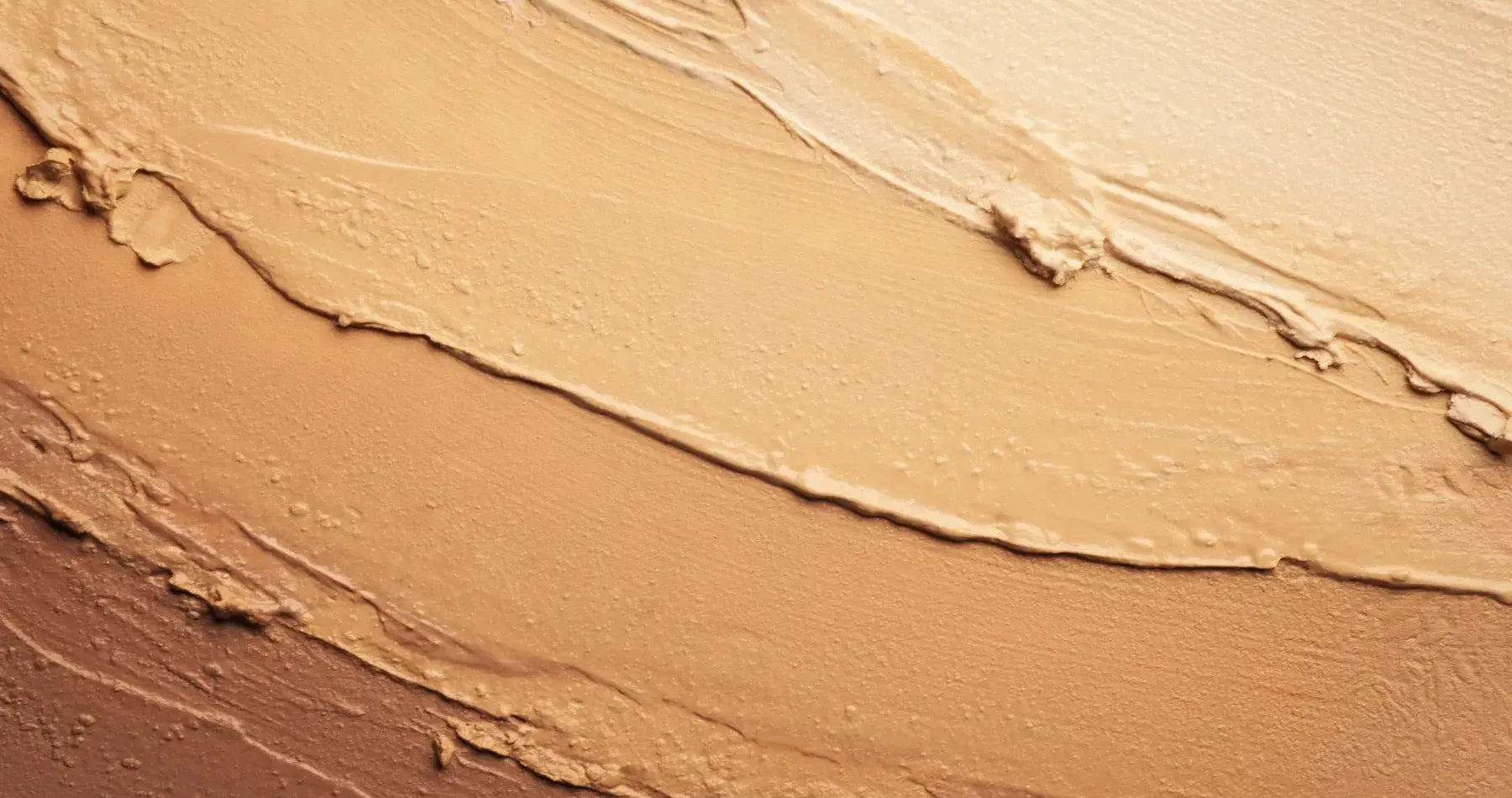In this blog, we’ll delve into the chemistry behind fake tanning and answer questions about specific products including spray tans and tan lotions. So, let’s get started!
Chemistry: How Does Fake Tan Work?
This bit is super technical, so if you just want to know how your favourite products work, scroll down to ‘How Does Tan Lotion Work?’
Fake tan formulae typically contain an active ingredient called dihydroxyacetone (DHA). DHA is a colourless sugar that temporarily darkens the skin when it reacts with amino acids in the outermost layer of the skin. This reaction produces a brown pigment called melanoidin, which causes the temporary tan.
DHA works by reacting with the skin’s natural amino acids within two to four hours of application. This reaction forms a temporary bond between the DHA and the amino acids, producing melanoidin. The outermost layers of skin containing this temporary pigment will ultimately shed off naturally over the course of three to seven days, leading to a fading of the tan.

How Does Tan Lotion Work?
You’ve probably got some kind of self-tanning product at home. Like other fake tans, they contain DHA, which slowly reacts with amino acids in the skin to create that lovely bronze colour.
What makes lotions special is that they’re often formulated with moisturisers, antioxidants, and nourishing ingredients. This gives you additional skin benefits along with the colour. These formulae produce long-lasting tans that fade slowly and naturally.
How Do Spray Tans Work?
Spray tans use the same active ingredient but are applied by a professional tanning technician with a spray gun. The technician sprays the DHA solution onto the skin, which creates a fine mist and an even application. Spray tans provide a quick and easy way to achieve a desired tan colour without risking uneven application.
Another benefit of spray tans is the ability to customise the colour intensity. Professional technicians can mix different concentrations of DHA solutions to suit your preference.
How Long Does Fake Tan Take to Develop?
Self-tanners require a minimum of 6-10 hours on your skin for optimal results. While they may start working before that time, you won’t achieve the best glow unless you leave them on for at least that long before showering. Also, if you sweat excessively, or expose your skin to water in any way, it will have a negative result on your tan.
Water is the enemy once you’ve applied a self-tanner. So, you need to exercise caution around good old H2O once the tanner is on your skin!
To achieve the best results from your self-tanner, it’s important to be patient and let it develop properly. Waiting for 6-10 hours will give you the desired colour and longer-lasting tan. Applying the self-tanner at night and letting it dry before going to bed is the most effective method. In the morning, if it’s not possible to apply it at night, make sure to choose a self-tanner that won’t stain your clothes. Remember, giving your skin enough time to develop the tan is essential, regardless of when you apply it.
How Does Gradual Tan Work?
If you’re looking for a subtle glow that doesn’t scream “fake tan,” gradual tanners are the perfect choice. They strike a balance between a glossy radiance and a natural-looking tan, boosting our self-confidence without going overboard, especially during the colder months.
Gradual tanners are a fusion of moisturisers and tanning solutions, available in various forms like creams and foams. They work their magic by gradually building a beautiful glow over a few days. One key difference between gradual tanning and traditional fake tanning is the likelihood of streaks. Since gradual formulae create a lighter tan, uneven patches are less noticeable. This is because the colour difference between your skin tone and the enhanced shade is less pronounced.
But fret not if you’re still worried about streaks. Gradual tans are virtually foolproof, thanks to their hydrating formulae that easily glide onto your skin. Packed with nourishing ingredients like butters and oils, they ensure a velvety smooth application for a flawless finish.
Does Tan Continue to Develop After Washing It Off?
One common misconception about fake tan is that it continues to develop even after you wash it off. This is not the case. Once you rinse off the excess product, the tan that has developed is there to stay until your skin naturally exfoliates (usually after 5-7 days). However, some self-tanners may leave a residue on your skin that can keep developing if left on overnight. It’s always best to check the manufacturer’s instructions and avoid leaving the product on longer than recommended.
Contact Beau Bronzage to Order Fake Tan Products
Fake tan has become a staple in many people’s beauty routines, but understanding how it works can make all the difference in achieving a superior finish. By learning about the chemistry behind fake tanning and answering some common questions, we hope this blog post has provided you with the knowledge to make your next self-tanning experience a success. If you’re looking for high-quality self-tanning products, Beau Bronzage has a range of options that deliver natural-looking results.
All Beau Bronzage products are created with the highest quality ingredients and are eco & vegan-friendly, cruelty-free, paraben and alcohol free, and suitable for home and professional use. Plus, you can feel good knowing that your purchase has made a difference. Not only will you be supporting an ethically responsible UK business, but you will also be helping to protect animal welfare as Beau Bronzage never tests on animals. Visit Beau Bronzage’s website to shop our self-tanning collection and get your glow on!


